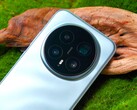Verdict - Xiaomi 17 Pro
The Xiaomi 17 Pro is a compact, powerful and premium-feeling, top-of-the-line smartphone. Despite having a slightly smaller battery than the Xiaomi 17, it still has excellent staying power.
The Pro model's real highlight and unique selling point is the secondary display. However, it is currently more of a nice-to-have than a must-have for potential buyers. Its future hinges on integrating third-party apps that would turn its current limited functionality into genuine added value in everyday situations.
As long as you don't mind importing the Chinese version and its associated drawbacks in Europe (no Android Auto, no eSIM, etc.), you can't go wrong with this small flagship phone. For around $800, there's nothing comparable or available in this country.
Pros
Cons
Price and availability - Xiaomi 17 Pro
In China, the Xiaomi 17 Pro's recommended retail price starts at 4,999 yuan (approximately $693). Import prices from our device lender, Trading Shenzhen, start at around $879. Unfortunately, due to the previous model's unavailability, we can safely expect the Pro model not to make it to Europe this year either.
Table of Contents
- Verdict - Xiaomi 17 Pro
- Specifications - Xiaomi 17 Pro
- Case - A compact, waterproof phone
- Features - A handy smartphone with speedy USB 3.2
- Software - The Xiaomi 17 Pro comes with Android 16
- Communication and GNSS - A small flagship phone with WiFi 7
- Telephone functions and voice quality - The Xiaomi 17 Pro offers dual-SIM
- Cameras - The Xiaomi phone packs an extremely dynamic Leica camera
- Accessories and warranty - The Android phone comes with a charger
- Input devices and operation - A handy smartphone with Face Unlock
- Display - Xiaomi's flagship phone uses OLED
- Performance - A small flagship phone with the Snapdragon 8 Elite Gen 5
- Emissions - The compact smartphone gets hot
- Battery runtimes
- Notebookcheck overall rating
- Possible alternatives compared
For the first time, Xiaomi has delivered a competitor to Apple's compact Pro model. The new Xiaomi 17 Pro comes in an ergonomic 6.3-inch form factor and is only slightly pared back compared to the Xiaomi 17 Pro Max. The highlight is on the rear of the device – a 2.7-inch AMOLED panel boasting a 120Hz refresh rate and high brightness.
Specifications - Xiaomi 17 Pro
Case - A compact, waterproof phone
The Xiaomi 17 Pro is housed in a compact and exceptionally well-made body that feels premium to the touch. The frame is constructed from aluminum, and Xiaomi uses Dragon Crystal Glass to protect the front and back. Thanks to its IP68 certification, the flagship phone is also highly resistant to both dust and water.
With a high screen-to-body ratio of 89.5 percent, the display covers almost the entire front side of the phone, resulting in a modern design. The 2.7-inch LTPO OLED display on the back is located next to the cameras. It is a particularly noteworthy highlight, which adds to both the form and function.
Features - A handy smartphone with speedy USB 3.2
The Xiaomi 17 Pro's Ultra Wideband (UWB) support allows for precise location tracking, and its integrated IR blaster can control compatible devices such as TVs or air conditioners.
It also features Miracast, NFC, and a fast USB-C port that complies with the USB 3.2 standard.
In addition to video output, this port also supports USB OTG, which allows you to connect external peripherals.
Software - The Xiaomi 17 Pro comes with Android 16
The Xiaomi 17 Pro uses Xiaomi's in-house HyperOS 3, which is based on Android 16. As is typical for the Chinese versions of Xiaomi phones, its software supports only a few language packs. Although neither German nor the Play Store is pre-installed, the latter can be easily installed.
No information has been provided regarding the duration of software updates. During our review period, the security patches were from October 2025 - in other words, very up-to-date.
Sustainability
We were unable to locate precise information regarding the materials used or an official CO2 balance for the latest Xiaomi generation. This means neither the smartphone's overall ecological footprint nor its repairability can be assessed.
Communication and GNSS - A small flagship phone with WiFi 7
In our tests, the Xiaomi 17 Pro's fast Wi-Fi 7 enabled high data speeds and a stable connection. When paired with the Asus ROG Rapture GT-AXE11000 reference router, the flagship phone achieved transfer speeds of over 1,000 Mbps. Despite this, we see some room for improvement, particularly on the 6 GHz frequency band.
Thanks to its broad support for 5G and 4G frequencies (including the important bands 20 and 28), the Xiaomi smartphone can be used without any issues in German-speaking countries, even as an imported device.
| Networking | |
| Xiaomi 17 Pro | |
| iperf3 transmit AXE11000 | |
| iperf3 receive AXE11000 | |
| iperf3 transmit AXE11000 6GHz | |
| iperf3 receive AXE11000 6GHz | |
| Sony Xperia 1 VII | |
| iperf3 transmit AXE11000 | |
| iperf3 receive AXE11000 | |
| iperf3 transmit AXE11000 6GHz | |
| iperf3 receive AXE11000 6GHz | |
| Samsung Galaxy S25+ | |
| iperf3 transmit AXE11000 | |
| iperf3 receive AXE11000 | |
| iperf3 transmit AXE11000 6GHz | |
| iperf3 receive AXE11000 6GHz | |
| Apple iPhone 17 | |
| iperf3 transmit AXE11000 | |
| iperf3 receive AXE11000 | |
| iperf3 transmit AXE11000 6GHz | |
| iperf3 receive AXE11000 6GHz | |
| Google Pixel 10 Pro | |
| iperf3 transmit AXE11000 | |
| iperf3 receive AXE11000 | |
| iperf3 transmit AXE11000 6GHz | |
| iperf3 receive AXE11000 6GHz | |
| Xiaomi 15 Pro | |
| iperf3 transmit AXE11000 6GHz | |
| iperf3 receive AXE11000 6GHz | |
| Average 802.11 a/b/g/n/ac/ax/be | |
| iperf3 transmit AXE11000 | |
| iperf3 receive AXE11000 | |
| iperf3 transmit AXE11000 6GHz | |
| iperf3 receive AXE11000 6GHz | |
| Average of class Smartphone | |
| iperf3 transmit AXE11000 | |
| iperf3 receive AXE11000 | |
| iperf3 transmit AXE11000 6GHz | |
| iperf3 receive AXE11000 6GHz | |
Outdoors, the Xiaomi 17 Pro quickly acquired a satellite signal and pinpointed its location with an accuracy of 3 meters. It utilizes major global satellite networks in dual-band mode for positioning.
In our real-life testing, together with a reference smartwatch (Garmin Venu 2), the compact flagship phone performed very well. Deviations from the actual distance travelled were minimal.
Telephone functions and voice quality - The Xiaomi 17 Pro offers dual-SIM
Voice transmission was pleasant and natural, and the Xiaomi 17 Pro supports common features such as Wi-Fi calling, VoLTE, as well as dual SIM. An eSIM cannot be used with a Chinese import device.
Cameras - The Xiaomi phone packs an extremely dynamic Leica camera
Xiaomi has equipped the Xiaomi 17 Pro with a new 1/1.28-inch, highly dynamic Light Hunter 950L sensor. The manufacturer of the image sensor is not officially known, but according to sources in China, the sensor (SC590XS) is from SmartSens. The rear mini-display allows the main camera to also be used for selfies.
The Xiaomi 17 Pro delivers impressive results thanks to excellent sharpness and fast shutter speeds. Although the photos' dynamic range is also very good, the color accuracy could be a bit better. In low light, the compact flagship phone impressed us with minimal blurriness and a wealth of detail.
The Leica triple-camera system is combined with a solid ultra-wide camera and a telephoto lens with lossless 5x zoom. Zoomed-in shots are very respectable in daylight situations and quite usable up to 10x hybrid zoom.
Image comparison
Choose a scene and navigate within the first image. One click changes the position on touchscreens. One click on the zoomed-in image opens the original in a new window. The first image shows the scaled photograph of the test device.
Main cameraMain cameraLow lightUltra-wide-angle

Accessories and warranty - The Android phone comes with a charger
Among the range of items included in the box are a 100-watt power adapter, a protective case, and a charging cable. A screen protector also comes pre-installed. Additionally, our rental supplier, Trading Shenzhen, has included an EU adapter.
Our imported device comes with a 12-month warranty. Should a warranty claim arise, Trading Shenzhen offers the option of sending the smartphone to a German shipping address.
Input devices and operation - A handy smartphone with Face Unlock
Thanks to its compact design, the buttons find themselves in very ergonomic locations. Inputs on the 6.3-inch AMOLED display are accurately registered, and in everyday situations, the Xiaomi 17 Pro runs smoothly, with animations appearing fluid. One feature that particularly impressed us was the vibration motor.
The small display on the rear of the device is also easy to use, but it didn't offer any significant added value during our testing period.
The 3D ultrasonic fingerprint sensor for biometric user recognition unlocks the Xiaomi phone quickly and reliably. A rather insecure 2D face recognition feature, based on a face unlock function using the front camera, is also on board.
Display - Xiaomi's flagship phone uses OLED
The 6.3-inch LTPO AMOLED panel boasts a high resolution and a 120 Hz maximum refresh rate, which can be adaptively reduced to 1 Hz.
While our measurements on a white background yielded a peak brightness of only around 1,000 cd/m², we achieved an excellent 3,412 cd/m² using the more relevant APL18 test pattern. This corresponds to the advertised peak brightness of 3,500 nits and is responsible for excellent HDR effects.
As is usually the case with OLED displays, screen brightness is controlled using PWM modulation. This results in screen flicker and, according to the manufacturer, includes eye protection (frequency: 2,160 Hz). Our display measurements revealed a base flicker of approximately 120 Hz.
| |||||||||||||||||||||||||
Brightness Distribution: 96 %
Center on Battery: 1071 cd/m²
Contrast: ∞:1 (Black: 0 cd/m²)
ΔE ColorChecker Calman: 0.98 | ∀{0.5-29.43 Ø4.78}
ΔE Greyscale Calman: 1.2 | ∀{0.09-98 Ø5}
102.8% sRGB (Calman 2D)
Gamma: 2.221
CCT: 6703 K
| Xiaomi 17 Pro LTPO AMOLED, 2656x1220, 6.3" | Sony Xperia 1 VII OLED, 2340x1080, 6.5" | Samsung Galaxy S25+ Dynamic AMOLED 2X, 3120x1440, 6.7" | Apple iPhone 17 OLED, 2622x1206, 6.3" | Google Pixel 10 Pro OLED, 2856x1280, 6.3" | Xiaomi 15 Pro AMOLED, 3200x1440, 6.7" | |
|---|---|---|---|---|---|---|
| Screen | -59% | -41% | -10% | 50% | -20% | |
| Brightness middle (cd/m²) | 1071 | 1441 35% | 1371 28% | 1138 6% | 2161 102% | 1016 -5% |
| Brightness (cd/m²) | 1048 | 1450 38% | 1370 31% | 1127 8% | 2198 110% | 1017 -3% |
| Brightness Distribution (%) | 96 | 99 3% | 96 0% | 96 0% | 94 -2% | 98 2% |
| Black Level * (cd/m²) | ||||||
| Colorchecker dE 2000 * | 0.98 | 3.2 -227% | 2.7 -176% | 1.07 -9% | 0.7 29% | 1.15 -17% |
| Colorchecker dE 2000 max. * | 2.58 | 4.6 -78% | 4.2 -63% | 2.99 -16% | 1.8 30% | 3.57 -38% |
| Greyscale dE 2000 * | 1.2 | 2.7 -125% | 2 -67% | 1.8 -50% | 0.8 33% | 1.9 -58% |
| Gamma | 2.221 99% | 2.19 100% | 2.03 108% | 2.22 99% | 2.19 100% | 2.2 100% |
| CCT | 6703 97% | 6476 100% | 6450 101% | 6516 100% | 6646 98% | 6677 97% |
* ... smaller is better
Screen Flickering / PWM (Pulse-Width Modulation)
| Screen flickering / PWM detected | 120 Hz Amplitude: 19 % | ||
The display backlight flickers at 120 Hz (worst case, e.g., utilizing PWM) . The frequency of 120 Hz is very low, so the flickering may cause eyestrain and headaches after extended use. In comparison: 53 % of all tested devices do not use PWM to dim the display. If PWM was detected, an average of 8121 (minimum: 5 - maximum: 343500) Hz was measured. | |||
A series of measurements with a fixed zoom level and different brightness settings (The amplitude curve at minimum brightness appears flat, but this is due to the scaling. The enlarged version of the amplitude at minimum brightness can be seen in the info box.)
The color calibration and grayscale deviations are very minor. The Xiaomi 17 Pro also offers color display settings, but HyperOS 3 no longer supports the extensive customization options found in its predecessor.
Display Response Times
| ↔ Response Time Black to White | ||
|---|---|---|
| 0.6 ms ... rise ↗ and fall ↘ combined | ↗ 0.3 ms rise | |
| ↘ 0.3 ms fall | ||
| The screen shows very fast response rates in our tests and should be very well suited for fast-paced gaming. In comparison, all tested devices range from 0.1 (minimum) to 240 (maximum) ms. » 1 % of all devices are better. This means that the measured response time is better than the average of all tested devices (20.2 ms). | ||
| ↔ Response Time 50% Grey to 80% Grey | ||
| 0.7 ms ... rise ↗ and fall ↘ combined | ↗ 0.3 ms rise | |
| ↘ 0.4 ms fall | ||
| The screen shows very fast response rates in our tests and should be very well suited for fast-paced gaming. In comparison, all tested devices range from 0.165 (minimum) to 636 (maximum) ms. » 2 % of all devices are better. This means that the measured response time is better than the average of all tested devices (31.6 ms). | ||
Performance - A small flagship phone with the Snapdragon 8 Elite Gen 5
Anyone on the hunt for one of the best currently available SoCs will be well served by the Snapdragon 8 Elite Gen 5. The 4.6 GHz peak clock speed resulted in high Geekbench scores in single-core tests, but the multi-core results were particularly outstanding. However, the Qualcomm chipset still has room for improvement regarding AI benchmarks.
| UL Procyon AI Inference for Android - Overall Score NNAPI | |
| Samsung Galaxy S25+ | |
| Xiaomi 17 Pro | |
| Average Qualcomm Snapdragon 8 Elite Gen 5 (22372 - 23712, n=5) | |
| Xiaomi 15 Pro | |
| Average of class Smartphone (3769 - 81594, n=137, last 2 years) | |
| Sony Xperia 1 VII | |
| Google Pixel 10 Pro | |
The Adreno 840 GPU chip built into the Snapdragon 8 Elite Gen 5 achieved very good, but not the highest scores in GFXBench. Even demanding games should run smoothly on the Xiaomi 17 Pro, with the 4K test yielding a strong 49fps.
GFXBench (DX / GLBenchmark) 2.7: T-Rex Onscreen | 1920x1080 T-Rex Offscreen
GFXBench 3.0: on screen Manhattan Onscreen OGL | 1920x1080 1080p Manhattan Offscreen
GFXBench 3.1: on screen Manhattan ES 3.1 Onscreen | 1920x1080 Manhattan ES 3.1 Offscreen
GFXBench: on screen Car Chase Onscreen | 1920x1080 Car Chase Offscreen | on screen Aztec Ruins High Tier Onscreen | 2560x1440 Aztec Ruins High Tier Offscreen | on screen Aztec Ruins Normal Tier Onscreen | 1920x1080 Aztec Ruins Normal Tier Offscreen | 3840x2160 4K Aztec Ruins High Tier Offscreen
| 3DMark / Wild Life Extreme Unlimited | |
| Samsung Galaxy S25+ | |
| Xiaomi 17 Pro | |
| Sony Xperia 1 VII | |
| Xiaomi 15 Pro | |
| Apple iPhone 17 | |
| Google Pixel 10 Pro | |
| 3DMark / Wild Life Extreme | |
| Samsung Galaxy S25+ | |
| Xiaomi 17 Pro | |
| Xiaomi 15 Pro | |
| Sony Xperia 1 VII | |
| Apple iPhone 17 | |
| Google Pixel 10 Pro | |
| 3DMark / Wild Life Unlimited Score | |
| Samsung Galaxy S25+ | |
| Xiaomi 17 Pro | |
| Xiaomi 15 Pro | |
| Sony Xperia 1 VII | |
| Apple iPhone 17 | |
| Google Pixel 10 Pro | |
| 3DMark / Solar Bay Score | |
| Xiaomi 17 Pro | |
| Samsung Galaxy S25+ | |
| Xiaomi 15 Pro | |
| Sony Xperia 1 VII | |
| Apple iPhone 17 | |
| 3DMark / Solar Bay Unlimited Score | |
| Samsung Galaxy S25+ | |
| Xiaomi 17 Pro | |
| Sony Xperia 1 VII | |
| Xiaomi 15 Pro | |
| Apple iPhone 17 | |
| 3DMark / Steel Nomad Light Unlimited Score | |
| Xiaomi 17 Pro | |
| Xiaomi 15 Pro | |
| Samsung Galaxy S25+ | |
| Sony Xperia 1 VII | |
| Apple iPhone 17 | |
| Google Pixel 10 Pro | |
| 3DMark / Steel Nomad Light Score | |
| Xiaomi 17 Pro | |
| Samsung Galaxy S25+ | |
| Xiaomi 15 Pro | |
| Sony Xperia 1 VII | |
| Apple iPhone 17 | |
| Google Pixel 10 Pro | |
| GFXBench (DX / GLBenchmark) 2.7 / T-Rex Onscreen | |
| Google Pixel 10 Pro | |
| Xiaomi 15 Pro | |
| Samsung Galaxy S25+ | |
| Xiaomi 17 Pro | |
| Sony Xperia 1 VII | |
| Apple iPhone 17 | |
| GFXBench (DX / GLBenchmark) 2.7 / T-Rex Offscreen | |
| Xiaomi 17 Pro | |
| Xiaomi 15 Pro | |
| Sony Xperia 1 VII | |
| Samsung Galaxy S25+ | |
| Apple iPhone 17 | |
| Google Pixel 10 Pro | |
| GFXBench 3.0 / Manhattan Onscreen OGL | |
| Google Pixel 10 Pro | |
| Xiaomi 15 Pro | |
| Samsung Galaxy S25+ | |
| Xiaomi 17 Pro | |
| Sony Xperia 1 VII | |
| Apple iPhone 17 | |
| GFXBench 3.0 / 1080p Manhattan Offscreen | |
| Samsung Galaxy S25+ | |
| Xiaomi 15 Pro | |
| Sony Xperia 1 VII | |
| Xiaomi 17 Pro | |
| Apple iPhone 17 | |
| Google Pixel 10 Pro | |
| GFXBench 3.1 / Manhattan ES 3.1 Onscreen | |
| Xiaomi 15 Pro | |
| Samsung Galaxy S25+ | |
| Xiaomi 17 Pro | |
| Sony Xperia 1 VII | |
| Google Pixel 10 Pro | |
| Apple iPhone 17 | |
| GFXBench 3.1 / Manhattan ES 3.1 Offscreen | |
| Xiaomi 17 Pro | |
| Xiaomi 15 Pro | |
| Sony Xperia 1 VII | |
| Samsung Galaxy S25+ | |
| Apple iPhone 17 | |
| Google Pixel 10 Pro | |
| GFXBench / Car Chase Onscreen | |
| Xiaomi 15 Pro | |
| Samsung Galaxy S25+ | |
| Xiaomi 17 Pro | |
| Sony Xperia 1 VII | |
| Apple iPhone 17 | |
| Google Pixel 10 Pro | |
| GFXBench / Car Chase Offscreen | |
| Xiaomi 15 Pro | |
| Xiaomi 17 Pro | |
| Sony Xperia 1 VII | |
| Samsung Galaxy S25+ | |
| Apple iPhone 17 | |
| Google Pixel 10 Pro | |
| GFXBench / Aztec Ruins High Tier Onscreen | |
| Samsung Galaxy S25+ | |
| Xiaomi 17 Pro | |
| Sony Xperia 1 VII | |
| Xiaomi 15 Pro | |
| Google Pixel 10 Pro | |
| Apple iPhone 17 | |
| GFXBench / Aztec Ruins High Tier Offscreen | |
| Sony Xperia 1 VII | |
| Xiaomi 15 Pro | |
| Xiaomi 17 Pro | |
| Samsung Galaxy S25+ | |
| Apple iPhone 17 | |
| Google Pixel 10 Pro | |
| GFXBench / Aztec Ruins Normal Tier Onscreen | |
| Xiaomi 15 Pro | |
| Samsung Galaxy S25+ | |
| Xiaomi 17 Pro | |
| Sony Xperia 1 VII | |
| Google Pixel 10 Pro | |
| Apple iPhone 17 | |
| GFXBench / Aztec Ruins Normal Tier Offscreen | |
| Xiaomi 17 Pro | |
| Samsung Galaxy S25+ | |
| Sony Xperia 1 VII | |
| Xiaomi 15 Pro | |
| Apple iPhone 17 | |
| Google Pixel 10 Pro | |
| GFXBench / 4K Aztec Ruins High Tier Offscreen | |
| Samsung Galaxy S25+ | |
| Xiaomi 17 Pro | |
| Sony Xperia 1 VII | |
| Xiaomi 15 Pro | |
| Apple iPhone 17 | |
| Google Pixel 10 Pro | |
| Jetstream 2 - 2.2 Total Score | |
| Apple iPhone 17 (Safari Mobile 26) | |
| Sony Xperia 1 VII (Chrome 139.0.7258.160) | |
| Google Pixel 10 Pro (Chrome 140) | |
| Xiaomi 17 Pro (Chrome 141) | |
| Average of class Smartphone (2 - 469, n=46, last 2 years) | |
| Average Qualcomm Snapdragon 8 Elite Gen 5 (2 - 325, n=3) | |
| WebXPRT 4 - Overall | |
| Apple iPhone 17 (Safari Mobile 26) | |
| Xiaomi 15 Pro (Chrome 132) | |
| Samsung Galaxy S25+ (Chrome 133.0.6943.137) | |
| Google Pixel 10 Pro (Chrome 140) | |
| Average Qualcomm Snapdragon 8 Elite Gen 5 (102 - 278, n=5) | |
| Sony Xperia 1 VII (Chrome 139.0.7258.160) | |
| Average of class Smartphone (27 - 306, n=147, last 2 years) | |
| Xiaomi 17 Pro (Chrome 141) | |
| Octane V2 - Total Score | |
| Apple iPhone 17 (Safari Mobile 26) | |
| Samsung Galaxy S25+ (Chrome 133.0.6943.137) | |
| Sony Xperia 1 VII (Chrome 139.0.7258.160) | |
| Xiaomi 15 Pro (Chrome 132) | |
| Google Pixel 10 Pro (Chrome 140) | |
| Average Qualcomm Snapdragon 8 Elite Gen 5 (50987 - 99417, n=5) | |
| Xiaomi 17 Pro (Chrome 141) | |
| Average of class Smartphone (2228 - 121337, n=200, last 2 years) | |
| Mozilla Kraken 1.1 - Total | |
| Average of class Smartphone (257 - 28190, n=155, last 2 years) | |
| Xiaomi 17 Pro (Chrome 141) | |
| Sony Xperia 1 VII (Chrome 139.0.7258.160) | |
| Google Pixel 10 Pro (Chrome 140) | |
| Average Qualcomm Snapdragon 8 Elite Gen 5 (306 - 635, n=5) | |
| Xiaomi 15 Pro (Chrome 132) | |
| Samsung Galaxy S25+ (Chrome 133.0.6943.137) | |
| Apple iPhone 17 (Safari Mobile 26) | |
* ... smaller is better
| Xiaomi 17 Pro | Sony Xperia 1 VII | Samsung Galaxy S25+ | Google Pixel 10 Pro | Xiaomi 15 Pro | Average 1TB UFS 4.1 Flash | Average of class Smartphone | |
|---|---|---|---|---|---|---|---|
| AndroBench 3-5 | 173% | 88% | 46% | 147% | 113% | 66% | |
| Sequential Read 256KB (MB/s) | 3876.97 | 3847.82 -1% | 4057.35 5% | 1492.74 -61% | 3998.65 3% | 3689 ? -5% | 2223 ? -43% |
| Sequential Write 256KB (MB/s) | 3790.66 | 2936.71 -23% | 3311.02 -13% | 1353.55 -64% | 3673.38 -3% | 3761 ? -1% | 1838 ? -52% |
| Random Read 4KB (MB/s) | 58.82 | 477 711% | 294.51 401% | 264.44 350% | 409.67 596% | 344 ? 485% | 295 ? 402% |
| Random Write 4KB (MB/s) | 598.39 | 613.9 3% | 351.16 -41% | 347.84 -42% | 555.55 -7% | 423 ? -29% | 335 ? -44% |
Emissions - The compact smartphone gets hot
Temperature
We recorded high surface temperatures, and while the Pro model performs somewhat better than the Xiaomi 17, thermally induced throttling is very noticeable. In the 3DMark stress tests, the compact flagship phone's performance dropped by 30 percent.
(-) The maximum temperature on the upper side is 48.7 °C / 120 F, compared to the average of 35.2 °C / 95 F, ranging from 21.9 to 247 °C for the class Smartphone.
(-) The bottom heats up to a maximum of 49.2 °C / 121 F, compared to the average of 34 °C / 93 F
(+) In idle usage, the average temperature for the upper side is 25.3 °C / 78 F, compared to the device average of 32.9 °C / 91 F.
3DMark Stress Tests
| 3DMark | |
| Wild Life Stress Test Stability | |
| Apple iPhone 17 | |
| Google Pixel 10 Pro | |
| Xiaomi 15 Pro | |
| Xiaomi 17 Pro | |
| Sony Xperia 1 VII | |
| Samsung Galaxy S25+ | |
| Wild Life Extreme Stress Test | |
| Google Pixel 10 Pro | |
| Xiaomi 15 Pro | |
| Xiaomi 17 Pro | |
| Apple iPhone 17 | |
| Sony Xperia 1 VII | |
| Samsung Galaxy S25+ | |
| Solar Bay Stress Test Stability | |
| Xiaomi 15 Pro | |
| Apple iPhone 17 | |
| Xiaomi 17 Pro | |
| Sony Xperia 1 VII | |
| Samsung Galaxy S25+ | |
Speakers
The stereo speakers offer excellent sound for a compact device. Headphones can be connected via a wired USB port, but anyone preferring Bluetooth for wireless output can do so by taking advantage of a wide range of codecs and the new 6.0 standard.
Xiaomi 17 Pro audio analysis
(+) | speakers can play relatively loud (85.6 dB)
Bass 100 - 315 Hz
(±) | reduced bass - on average 13.5% lower than median
(±) | linearity of bass is average (11.3% delta to prev. frequency)
Mids 400 - 2000 Hz
(+) | balanced mids - only 4.6% away from median
(+) | mids are linear (4.3% delta to prev. frequency)
Highs 2 - 16 kHz
(±) | higher highs - on average 5.5% higher than median
(±) | linearity of highs is average (8.7% delta to prev. frequency)
Overall 100 - 16.000 Hz
(+) | overall sound is linear (14.9% difference to median)
Compared to same class
» 2% of all tested devices in this class were better, 2% similar, 96% worse
» The best had a delta of 11%, average was 35%, worst was 134%
Compared to all devices tested
» 19% of all tested devices were better, 4% similar, 77% worse
» The best had a delta of 4%, average was 24%, worst was 134%
Google Pixel 10 Pro audio analysis
(+) | speakers can play relatively loud (89.3 dB)
Bass 100 - 315 Hz
(-) | nearly no bass - on average 20.4% lower than median
(±) | linearity of bass is average (9.4% delta to prev. frequency)
Mids 400 - 2000 Hz
(+) | balanced mids - only 4.4% away from median
(+) | mids are linear (4.9% delta to prev. frequency)
Highs 2 - 16 kHz
(±) | higher highs - on average 5% higher than median
(+) | highs are linear (3.6% delta to prev. frequency)
Overall 100 - 16.000 Hz
(±) | linearity of overall sound is average (16.1% difference to median)
Compared to same class
» 5% of all tested devices in this class were better, 4% similar, 91% worse
» The best had a delta of 11%, average was 35%, worst was 134%
Compared to all devices tested
» 25% of all tested devices were better, 5% similar, 70% worse
» The best had a delta of 4%, average was 24%, worst was 134%
Battery runtimes
Power consumption
The 6,300 mAh battery housed inside the Xiaomi 17 Pro can be charged with modern PPS chargers at up to 100 watts. Wireless charging is also possible at a maximum of 50 watts. With a fast charger, we achieved charging times of 35 minutes.
Power consumption proved to be efficient both when running idle and under load.
| Off / Standby | |
| Idle | |
| Load |
|
Key:
min: | |
| Xiaomi 17 Pro 6300 mAh | Sony Xperia 1 VII 5000 mAh | Samsung Galaxy S25+ 4900 mAh | Apple iPhone 17 3692 mAh | Google Pixel 10 Pro 4870 mAh | Xiaomi 15 Pro 6100 mAh | Average Qualcomm Snapdragon 8 Elite Gen 5 | Average of class Smartphone | |
|---|---|---|---|---|---|---|---|---|
| Power Consumption | -3% | -45% | -26% | -51% | 7% | -12% | -18% | |
| Idle Minimum * (Watt) | 0.8 | 0.42 47% | 0.45 44% | 1.1 -38% | 1.01 -26% | 0.6 25% | 0.826 ? -3% | 0.848 ? -6% |
| Idle Average * (Watt) | 1.4 | 0.93 34% | 1.09 22% | 1.3 7% | 1.65 -18% | 0.9 36% | 1.426 ? -2% | 1.435 ? -3% |
| Idle Maximum * (Watt) | 1.8 | 0.95 47% | 1.13 37% | 1.5 17% | 2.05 -14% | 1.1 39% | 1.776 ? 1% | 1.621 ? 10% |
| Load Average * (Watt) | 4.2 | 8.62 -105% | 14.41 -243% | 7.6 -81% | 7.25 -73% | 6.7 -60% | 5.83 ? -39% | 6.99 ? -66% |
| Load Maximum * (Watt) | 8.9 | 12.47 -40% | 16.37 -84% | 12 -35% | 19.78 -122% | 9.5 -7% | 10.5 ? -18% | 11.3 ? -27% |
* ... smaller is better
Power consumption: Geekbench (150 cd/m²)
Power consumption: GFXbench (150 cd/m²)
Battery life
The Xiaomi 17 Pro's large battery capacity is responsible for excellent battery life. With adjusted display brightness (150 cd/m²), we managed almost 30 hours of use while browsing via Wi-Fi.
| Xiaomi 17 Pro 6300 mAh | Sony Xperia 1 VII 5000 mAh | Samsung Galaxy S25+ 4900 mAh | Apple iPhone 17 3692 mAh | Google Pixel 10 Pro 4870 mAh | Xiaomi 15 Pro 6100 mAh | |
|---|---|---|---|---|---|---|
| Battery runtime | ||||||
| WiFi v1.3 (h) | 29.7 | 21.4 -28% | 19.8 -33% | 20.1 -32% | 21.1 -29% | 24.1 -19% |
Notebookcheck overall rating
Unfortunately, the Xiaomi 17 Pro is a great smartphone that will probably never be officially released in Germany. Its secondary display definitely requires some software improvements before offering any real added value.
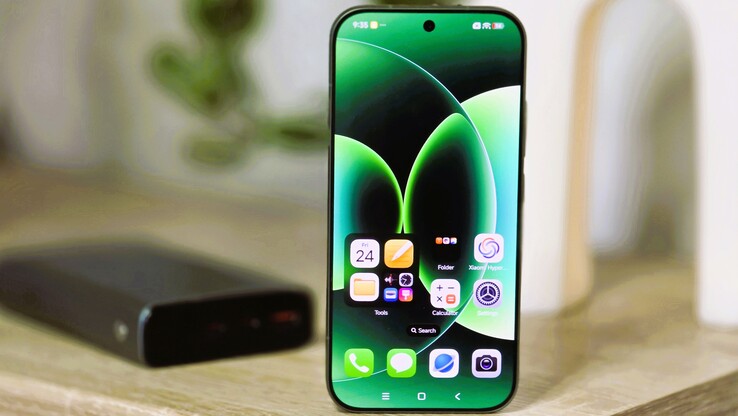
Xiaomi 17 Pro
- 10/27/2025 v8
Marcus Herbrich
Possible alternatives compared
Image | Model / Review | Price | Weight | Drive | Display |
|---|---|---|---|---|---|
| Xiaomi 17 Pro Qualcomm Snapdragon 8 Elite Gen 5 ⎘ Qualcomm Adreno 840 ⎘ 16 GB Memory, 1024 GB | Amazon: 1. $7.59 Anoowkoa 3 Pack Glass Screen... 2. $6.93 Milomdoi 3 Pack Privacy Scre... 3. $9.90 Anbzsign 2+1 Pack for Xiaomi... List Price: 650€ | 192 g | 1TB UFS 4.1 Flash | 6.30" 2656x1220 464 PPI LTPO AMOLED | |
| Sony Xperia 1 VII Qualcomm Snapdragon 8 Elite ⎘ Qualcomm Adreno 830 ⎘ 12 GB Memory, 256 GB | Amazon: 1. $11.99 Ibywind For Sony Xperia 1 VI... 2. $5.99 Supershieldz (2 Pack) Design... 3. $6.79 Anoowkoa 2 Pack for Sony Xpe... List Price: 1499€ | 197 g | 256 GB UFS 4.0 Flash | 6.50" 2340x1080 396 PPI OLED | |
| Samsung Galaxy S25+ Qualcomm Snapdragon 8 Elite for Galaxy ⎘ Qualcomm Adreno 830 ⎘ 12 GB Memory, 256 GB | Amazon: 1. SAMSUNG Galaxy S25 Ultra, 25... 2. $7.98 firtstnow 3 Pack Glass Scree... 3. $1,120.00 Samsung Galaxy S25 Ultra ... List Price: 1149 Euro | 190 g | 256 GB UFS 4.0 Flash | 6.70" 3120x1440 513 PPI Dynamic AMOLED 2X | |
| Apple iPhone 17 Apple A19 ⎘ Apple A19 GPU ⎘ 8 GB Memory, 256 GB NVMe | Amazon: 1. iPhone 17 Pro Cosmic Orange ... 2. $25.99 Apple iPhone 17 Silicone Cas... 3. $1,419.00 iPhone 17 Pro Max Deep Blue ... List Price: 949 Euro | 177 g | 256 GB NVMe | 6.30" 2622x1206 460 PPI OLED | |
| Google Pixel 10 Pro Google Tensor G5 ⎘ IMG DXT-48-1536 ⎘ 16 GB Memory, 256 GB | Amazon: $849.00 List Price: 1199€ | 207 g | 256 GB UFS 4.0 Flash | 6.30" 2856x1280 497 PPI OLED | |
| Xiaomi 15 Pro Qualcomm Snapdragon 8 Elite ⎘ Qualcomm Adreno 830 ⎘ 16 GB Memory, 1024 GB | Amazon: 1. $11.99 Ibywind for Xiaomi 15T Pro 5... 2. $6.59 Anoowkoa 3 Pack Designed for... 3. $7.99 Suttkue for Xiaomi 15T Pro S... List Price: 810€ | 213 g | 1 TB UFS 4.0 Flash | 6.73" 3200x1440 521 PPI AMOLED |
Transparency
The selection of devices to be reviewed is made by our editorial team. The test sample was provided to the author as a loan by the manufacturer or retailer for the purpose of this review. The lender had no influence on this review, nor did the manufacturer receive a copy of this review before publication. There was no obligation to publish this review. As an independent media company, Notebookcheck is not subjected to the authority of manufacturers, retailers or publishers.
This is how Notebookcheck is testing
Every year, Notebookcheck independently reviews hundreds of laptops and smartphones using standardized procedures to ensure that all results are comparable. We have continuously developed our test methods for around 20 years and set industry standards in the process. In our test labs, high-quality measuring equipment is utilized by experienced technicians and editors. These tests involve a multi-stage validation process. Our complex rating system is based on hundreds of well-founded measurements and benchmarks, which maintains objectivity. Further information on our test methods can be found here.






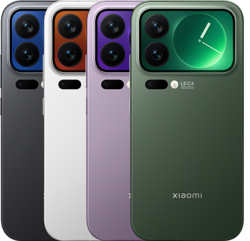




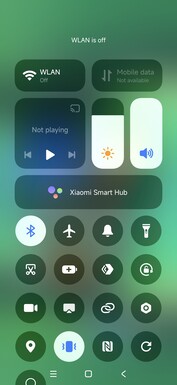
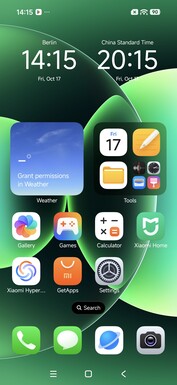


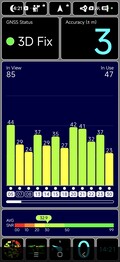

















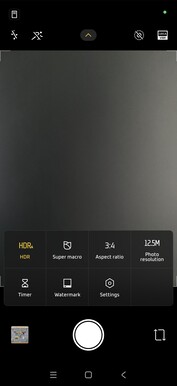
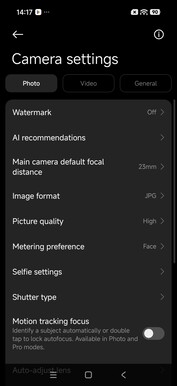

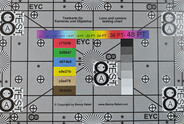



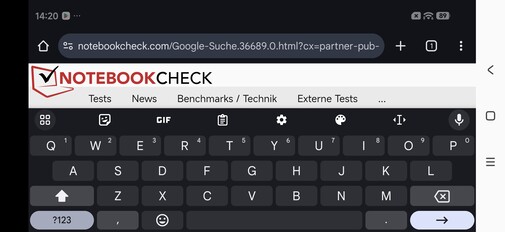



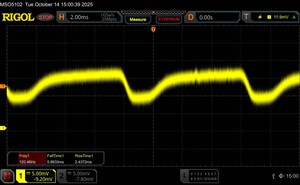






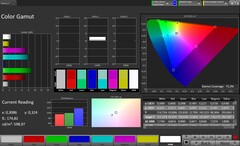
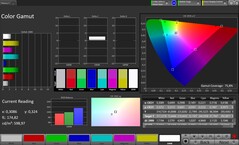
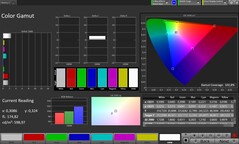
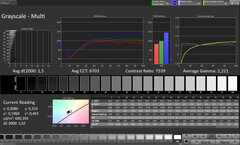
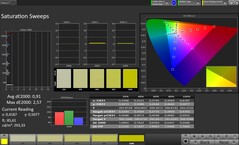
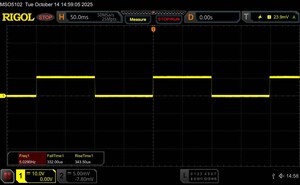
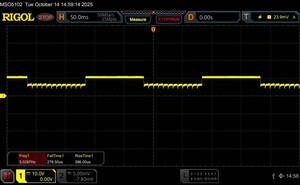




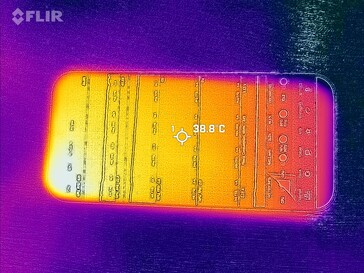
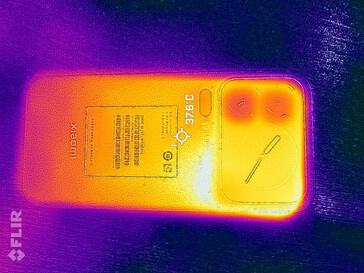
 Total Sustainability Score:
Total Sustainability Score: 









